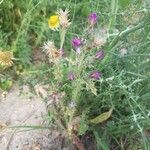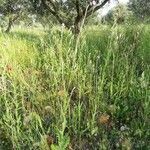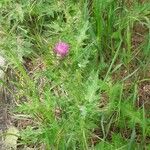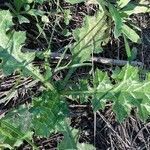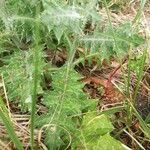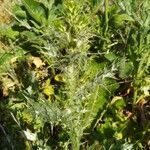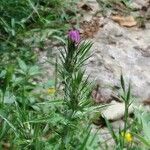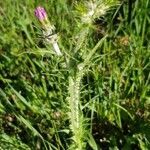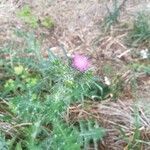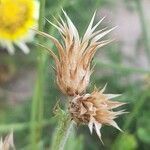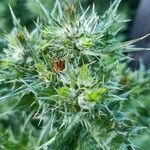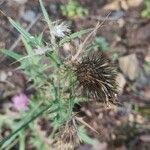Annual or biennial herb to 1.2 m high. Stems arachnoid-hairy; wings 2–6 mm wide. Leaves grey, moderately arachnoid-tomentose above, densely arachnoid-tomentose below; glands absent; marginal spines 2–6 mm long, white to pale brown. Capitula in sessile to subsessile terminal clusters of 1–4; involucre cylindrical, 17–23 mm long, 8–11 mm wide excluding patent bracts, deciduous at fruiting stage; median involucral bracts erect to patent, narrowly deltate, 13–17 mm long, 2–3 mm wide at base, with entire herbaceous margins, sparsely to densely arachnoid-hairy. Corolla tube 9–14 mm long; lobes 4.5–5.5 mm long. Anthers 5–6 mm long. Achenes ellipsoid, 4.8–5.3 mm long, pale brown with darker longitudinal streaks. Pappus bristles 167–190, 14–16 mm long.
A herb. It is a thistle. It grows for one or two years. It grows 20-130 cm tall. The leaves are alternate. They are divided into leaflets along the stalk. There are 3-6 pairs of lobes with spines.
